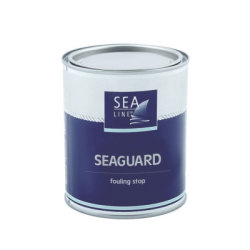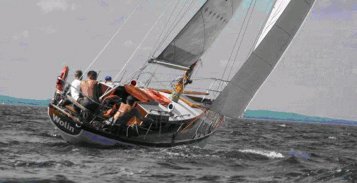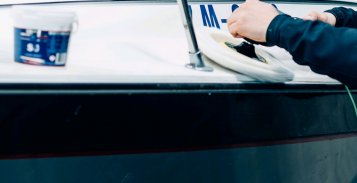
SEAGUARD FOULING STOP – a new anti-fouling paint for hulls.
Contrary to the traditional anti-fouling paints, SEAGUARD does not contain active ingredients, i.e. toxic biocides. The bottom paint is much more environmentally friendly, which is significant especially in the case of such reservoirs as lakes. It can also be used for fresh waters, coastal waters and salt waters. Modern solutions were applied in producing this paint which allowed to create a coating which will make it more difficult for lichens to maintain and develop on a surface. Sea-Line Seaguard works best for units moving with the speed not higher than of 30 knots and which are used often.
SEAGUARD is a self-polishing paint which is an extra benefit for users. It can be used for all types of yachts and boats – laminate, wood, steel and aluminium. It is available in 0,75 l and 2,5 l containers, navy blue and white colours. SEAGUARD is a paint which can safely be applied with air spraying and its advantage is high capability – up to 10m2 out of 1 litre.
The product was designed in view of the countries where anti-fouling paints containing biocides are forbidden and recalled. SEAGUARD FOULING STOP is compatible with the majority of available anti-fouling products and will be available from 10th March 2016.

Ci spiace, ma questo articolo è disponibile soltanto in Polacco.

Come and join us at METSTRADE 2023, METSTRADE the best event for marine industry professionals, happening from November 15th to […]

Visit us and our production plant without traveling

New in the 2023 season is a new polishing wool The new black and white polishing pads in premium quality […]
We do not recommend degreasing the surface with acetone, because acetone evaporates very quickly, which affects the quality of cleaning the painted surface.

Il patch e compensare le irregolarità derivanti da danni durante la produzione

Barca protezione superficiale contro l’influenza di azioni distruttive di osmosi e la corrosione in ambienti difficili

Protezione contro l’acqua e contro gli effetti negativi delle radiazioni UV

Proteggere la parte inferiore della barca prima-tedesco ricoperta di alghe e conchiglie. La prevenzione dell’azione di acqua.

Rimozione efficace di ritenzione graffi, di aggiornamento e il colore del mantello gel o lacca

Laminazione, incollaggio e tappatura perdite

Per il riempimento di piccole fessure e ubyt gemme in gelcoat

Una gamma di prodotti utili quando si lavora costruttore di barche